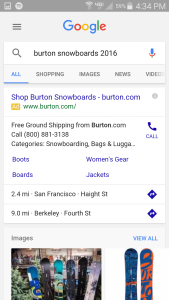For most small businesses, the advent of social media platforms a marketing tool came as something of a surprise. For that reason, social media penetration among small businesses took until 2017 to reach 75%, leaving many scrambling to catch up even as the major social channels became saturated. It was a costly delay.
But now, small businesses have a rare opportunity to get in early on a young social media platform before it’s overwhelmed by messaging from well-funded big brands. The platform I’m talking about is TikTok. And unless you’ve been living under a rock somewhere for the last year or so, you’ve probably heard of it.
But what you may not know is that TikTok is one of the fastest-growing social media platforms to come around since Facebook. Launched worldwide in 2018, it’s already amassed a user base of 800 million people. If you’re keeping score, that’s more than double the users of Twitter, which still serves as an anchor for almost every small business social media marketing strategy today.
And it’s not slowing down. TikTok regularly bests its competitors on monthly mobile app download lists, topping the charts in July and every other month this year (except for one when the COVID-19 pandemic vaulted Zoom to the top). All of that download activity points to TikTok having a record second half that could see it overtake Instagram in total active users.
And best of all, there aren’t very many businesses that have figured out how to use TikTok as a marketing vehicle. It’s still in a user growth phase and hasn’t yet evolved any integrated marketing tools or features. That means it can’t yet be exploited by big businesses that rely on marketing automation tools to manage their complex multi-platform campaigns. That also makes it perfect for small, nimble hands-on marketing efforts of the type that small businesses excel at.
But for a small business to get started with marketing using TikTok, they have to first know what avenues are available for them to do so. Then they can build a robust effort that’s all but guaranteed to reach its intended audience and make a real impact. To help, here’s a guide to marketing on TikTok for small businesses. We’ll cover what methods are available, which approaches work best, and what to avoid. Let’s get started, shall we?
The 3 Main TikTok Marketing Approaches
Before we delve into exactly what small businesses need to do to make the best use of TikTok as a marketing platform, let’s first identify the three major approaches to doing so. They are:
- Using paid advertising to reach pre-selected audiences
- Direct content creation on a branded business channel
- Partnering with relevant influencers to connect with their existing audience
Although these options sound pretty standard for social media, TikTok does add some wrinkles in how they work. For that reason, small business marketers need a clear understanding of the ins-and-outs of each approach before they decide which to use and in what ratio. And that’s what you’re about to learn.
The How and Why of Advertising on TikTok
Unlike traditional digital display advertising, TikTok offers several platform-specific ways for advertisers to reach their intended audience. But first, you’ll need to create an advertiser account. You can start the process by visiting the TikTok advertising page and filling in your business’ information. After a TikTok representative makes sure you’re a qualified business, they’ll reach out to you to complete the account creation process.
Once you have an advertising account, you’ll have access to a dashboard that allows for the creation of an advertising campaign. On TikTok, advertising can take many forms, including:
- In-Feed Videos – Video ads that display on users’ feeds throughout their ‘For You’ page. These are the most basic types of advertisements on the platform.
- Brand Takeovers – A full-screen video ad that displays when users launch the app, before reverting back to an in-feed video ad.
- Hashtag Challenges – Displayed on the discovery page, these ads prompt users to create content that fits in with the brand’s chosen hashtag.
- Sponsored AR Content – Branded graphical elements, filters, lenses, and stickers that users can include in their own videos.
- Custom Influencer Packages – Ads that run as pre-rolls on sponsored content by a user that has an audience intersecting with your market.
Now, the first thing that small business marketers are going to notice about the advertising options is that they’re extremely expensive compared to other social media platforms. So, unless you’ve got someone on staff with some serious digital marketing skills on their resume, you can end up blowing a big part of your marketing budget that would be better spent elsewhere.
That’s not to say that small businesses shouldn’t use paid advertising on TikTok, it’s just that a fair amount of caution is warranted. The good news is, TikTok is offering some small business-specific advertising credits in response to the COVID-19 crisis that might serve as a valuable jumping-off point for a campaign. If nothing else, they might allow you to fine-tune your first campaign before investing any real money into it – so act quickly if you want to take advantage of the opportunity.
The How and Why of Direct Content Creation
For small businesses, creating custom content on their own branded account offers the biggest bang for the buck. By knowing how the platform works, it’s still possible to build an audience around your brand’s content without spending very much money at all. And you don’t have to be particularly adept at video creation to do it.
For proof, look no further than the official account of the Washington Post. As a brand they’re about as old-school as it gets, and yet they’ve amassed an impressive 575 thousand followers in little more than a year. Even more impressive is that those followers generated over 24.5 million likes in that time – so there’s real engagement with their content. And if you take some time to go through their posts, you’ll see that they’re nothing more complicated than a handful of employees riffing on some popular TikTok memes and the news of the day.
The reason that creating branded content works so well on TikTok is that it doesn’t promote new content in the same way as other social platforms. Because they give little weight to account popularity, a small business can get some serious attention and go viral on day one, so long as they make a bit of content that users like.
And perhaps best of all, once you’ve established a following on TikTok for your business, it becomes possible to run your own user content challenges instead of spending big bucks on a hashtag challenge campaign. In that way, you can engage with your followers and create even more opportunities to reach new audiences.
The trouble with content creation, however, is that it’s not always easy to discern what’s going to resonate with your target audience. To get started, it’s helpful to study TikTok’s Discovery Page to see what types of content is trending. Pay careful attention to the popular hashtags and music, as they’ll provide clues on where to focus your content. Feel free to make content that’s original, yet in line with what’s trending. As long as you’re offering a fresh and unique take on whatever topics you choose, the audience will be there for you.
The How and Why of Partnering with Influencers
The last major option that small businesses can use as a part of their TikTok marketing strategy is to partner with influencers who are relevant to their industry to create some branded content. In this case, I’m talking about the DIY approach rather than relying on TikTok’s custom influencer packages feature.
The reason I’m calling this a distinct approach for small businesses is that identifying the right influencers and working with them directly can be a whole lot more cost-effective than the advertising route. This is especially true if you focus on micro-influencers to create a targeted engagement strategy.
In terms of cost, there’s simply no comparison. If you find the right micro-influencer, you might be able to agree on a flat rate for a custom video for as little as $ 200. When you consider that TikTok has an ad campaign minimum of $ 500 (which wouldn’t include any crossover with an influencer), the difference is clear.
What’s important is to take the time to research and understand the audience you’re trying to connect with. You don’t have to find the member of your target audience with the biggest reach – just someone who has a unique voice that the audience will listen to. Once you do, reach out to them and see if they’re interested in working with your brand. Under the right circumstances, you should be able to build a few beneficial influencer partnerships to base a marketing campaign on at surprisingly low cost.
Bear in mind, though, that you’re going to have to be prepared to cede creative control over what content the influencer will create for you. All you should do is set some ground rules to keep things in good taste and on-brand. The goal is to let the influencer make the content as they see fit – after all, they know their audience and that’s why you’re paying them in the first place!
Putting it all Together
For the average small business, the optimal TikTok marketing campaign will lean heavily on direct content creation. It’s the most cost-effective solution that doesn’t come with much of a penalty when your content doesn’t catch on. And since you don’t need a giant follower list to be included in other users’ feeds, it’s possible to strike a chord with your audience and have a simple snippet of video generate some serious buzz around your brand.
And those are the very same reasons why most small businesses shouldn’t make paid advertising on TikTok the centerpiece of a campaign. The costs are high, so there’s a much bigger penalty if your campaign doesn’t drive the reaction you want. And although you might be able to claim some advertising credits to test-drive your messaging, it’s advisable for most small businesses to tread lightly when it comes to paid ads.
At the same time, however, it’s worth it to try and support your business’s brand presence on TikTok with some form of influencer campaign. Consider this the equivalent of applying some basic SEO principles to your business website. It’ll generate some inbound traffic to your own content to create a self-sustaining community connected to your brand.
Plus, since small businesses can typically find plenty of micro-influencers to work with, it’s still cost-effective and can raise your brand profile in a hurry. And time is of the essence. TikTok is well aware of how many brands are just waiting for them to build more robust marketing tools into their platform – and they also know how much money is waiting for them when they do.
So, the most important lesson that small businesses can take away here is to try and exploit the lower-cost marketing methods that are still available on TikTok. And to do it as soon as possible. Those that wait are making the same mistake that led to many small businesses missing out on the rise of Facebook, Instagram, and Twitter. And as they say, those who do not study history are doomed to repeat it – so it’s time to get moving right away.
Digital & Social Articles on Business 2 Community
(17)







